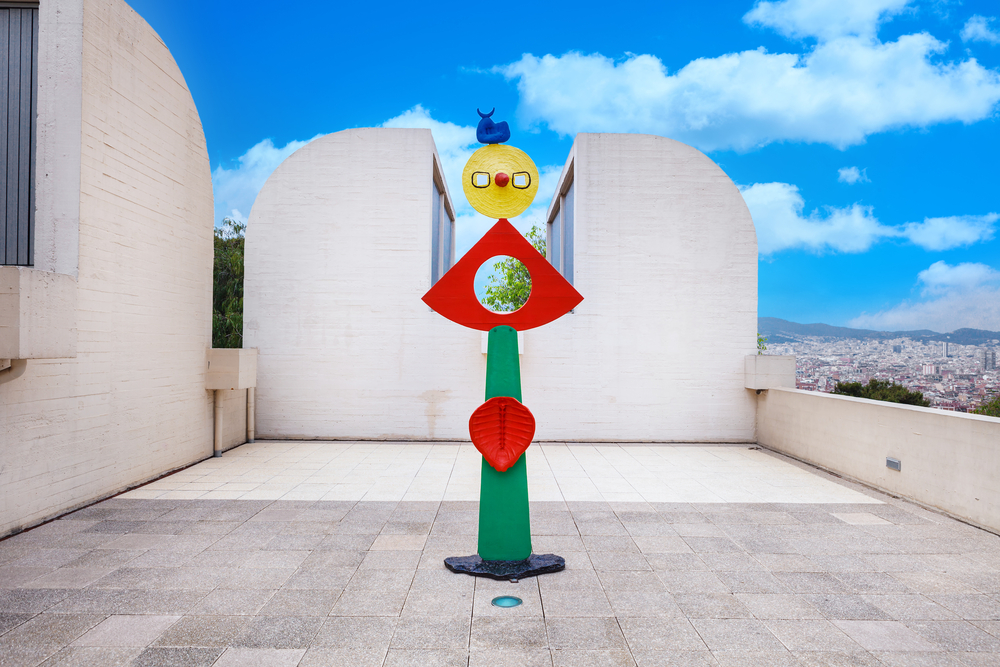MiróShop | Fundació Joan Miró
MiróShop | Fundació Joan Miró
Featured products
‹›
-
Diptych Beehave. Bee writings + Where are…
P.V.P.
30,00 €
Friends Price
27,00 €Beehave elicited a diptych publication that was released in two stages: the first part, Bee Writings, is a compilation of essays that provides the theoretical framework for the exhibition; the second, Where Are the Bees?, gathers all the interventions that artists from around the world presented within the Fundació and throughout the city.
-
Miró and the catalan poets
P.
V.P.
990,00 €
Friends Price
891,00 €Miró and the Catalan Poets is part of the book series the Enciclopèdia Catalana has dedicated to the great Catalan artists of the 20th-century, such as Picasso and Dalí. This volume, dedicated in turn to Miró, is a book of books, a recompilation of all the work that Miró did with Catalan poets, including J.V. Foix, Salvador Espriu, Joan Brossa and…
-
Guide to the Fundació Joan Miró
P.V.P.
16,00 €
Friends Price
14,40 €The foundation’s collection of works by Joan Miró includes paintings, drawings, sculptures, ceramics, textiles and an extensive print archive. In addition, it also features an exceptional collection of the artist’s preliminary sketches, notes, scale models, sketchbooks and correspondence.
This extensive, diverse collection, representative of all the…
-
Mironins. A book for playing and learning…
P.V.P.
9,90 €
Friends Price
8,91 €An activity and games book for kids aged 3 and upwards. As they play with the Mironins – characters who have escaped from one of Joan Miró’s paintings – they’ll have fun and learn about the life and work of one of the most remarkable Catalan artists of the 20th century.
Related Links
Online tickets
Become a friend
Private visits
Accessibility
Exhibition catalogues
Best sellers
Museum of the Foundation Joan Miró in Barcelona
When traveling to Barcelona, you will inevitably come across art works by the artist Joan Miró: when you arrive at the airport, you will be greeted by a huge mosaic of Miró and the city’s most representative bank, la Caixa, has a star created by the artist in the logo.
Recommendations for the Miró-Museum
- Free admission with the Articket and the Barcelona Card
- Get to the Miró-Museum with the Bus Turístic
Close to Plaça Espanya at Parc de Joan Miró, behind the department store Las Arenas, Joan Miró’s “Dona i Ocell” (woman and bird), a colourful tribute to the fusion of man and woman, is located. If you’re getting to Barcelona via cruise ship over the harbour: even here you are welcomed by Miró’s round mosaic face at the Ramblas.
It is worth it, to dedicate your time to Miró’s works at the museum Fundació Joan Miró. An opportunity arises to walk from Plaça Espanya to the Miró Museum. Stroll past the MNAC, the Catalonian national museum, through the small Jardí de les Escultures, which is leading you straight to the Fundació.
The Miró Museum and the Fundació Joan Miró
The foundation Fundació Joan Miró was initiated by the artist Joan Miró himself and the same year, the museum was opened on June 10th in 1975.
The museum owns over 10.000 paintings, drawings, sculputes, stage designs and carpets from Joan Miró – the earliest drawings are from 1901. On the roof top terrace you can admire Miró’s colourful sculpures together with a wonderful view of Barcelona. The Miró museum enfolds by far the largest collection of Joan Miró’s works today.
Miró wanted to create an international, interdisciplinary centre, which makes art publicly available. Until today the foundation organizes alternating contemporary exhibitions from the 20th and 21st century, as well as academic research projects and cultural events. Among others we recommend the “Nits de música” (nights of music) with numerous offers of classical music, where international artists perform each Thursday.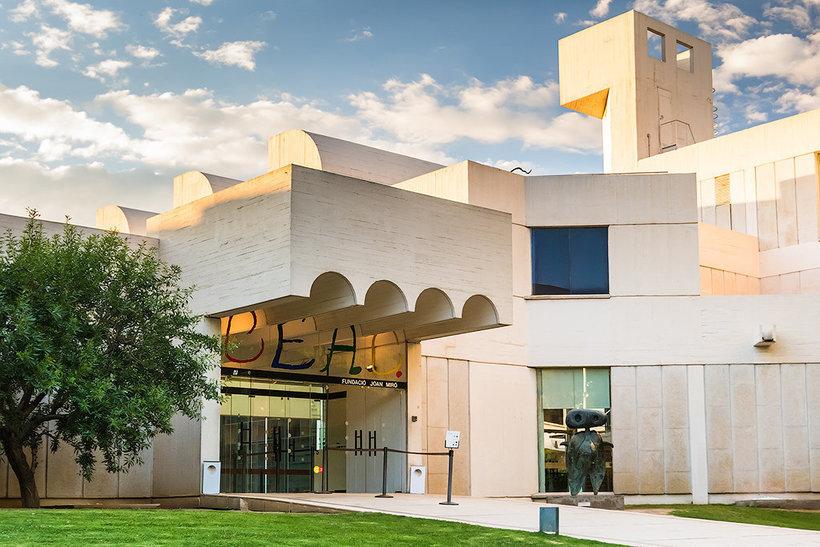
The Museum Building
The building was created by Josep Lluís Sert, Miró’s good friend and Le Corbusier’s student. You can recognize the close friendship and the cooperation of them by the alternation of exhibit and architecture: both tended to harmonic forms and playing with light, space and colours; besides that they combined their love to nature and Catalonia, which explains the architactural distinctiveness of the inner courtyard in the middle of the building, which all the rooms are centrifugically arranged to. You can find this typical Catalonian, from Roman times originating so called “Impluvium” in numerous Catalonian monasteries and palaces.
During Franco’s dictatorship, Josep Lluís Sert was the head of School of Design at Harvard University in the U.S. and was thus the first internationally renowned Spanish architect. In 1929 he founded the GATPAC (Grup d’Arquitectes i Tècnics per the Progrés de l’Architecture Contemporània), to release a pulse towards the modernisation and development of the Spanish architecture.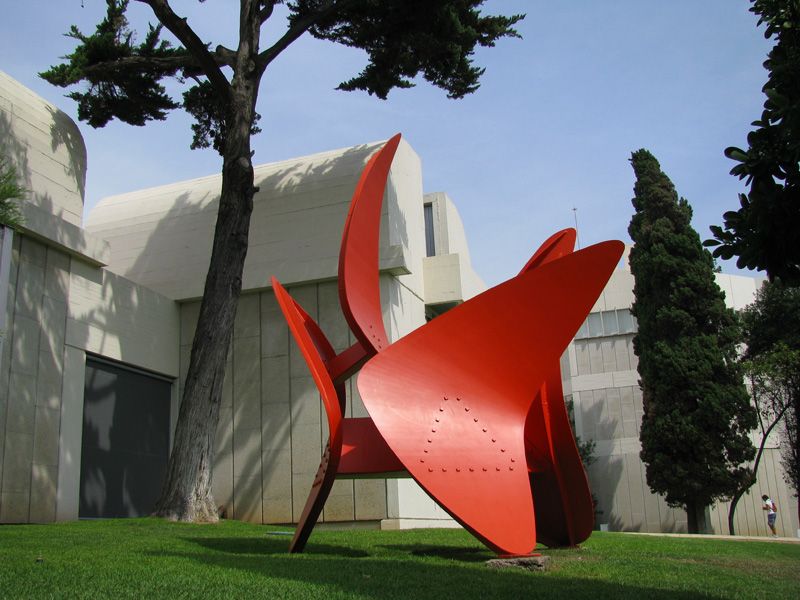
The clear and cubistic shapes all in white make the museum building look light and flowing and make the rooms look larger. The offset arrangement of the inner rooms, interfused by bright patios and terraces create dynamic, transparency and a lot of natural light in the inside of the building. For Josep Lluís Sert the core elements were flexibility and movement, without losing spacial continuity. As a result, the visitors are given the opportunity to experience the artwork in different ways, depending on which room they are approaching the objects from.
The building was expanded in 1986 and 2000 and received the „Twenty-Five Year Award“ of the American Institute of Architects in 2002.
From the terrace of the museum you have a wonderful view over the buildings of Barcelona. After the exhibition you can anjoy a break in the museum café in between Miró’s sculptures and afterwards visit the musum library, which holds the artist’s personal book collection.
Book tickets for the Miró Museum here
- Miró Museum: tickets for admission here
- Articket: admission to 6 most famous museums, valid for one year
- Barcelona Card: many discounts and free admissions
- Bus Turístic: hop-off directly in front of the Miró Museum
More museums in Barcelona
Articket BCN – Barcelona Card – Picasso Museum – Aquàrium – Fundació Joan Miró – MEAM – Moco Museum – MACBA – MNAC – Gaudí Experience 4D – Poble Espanyol – CosmoCaixa – Egyptian Museum – Museu del Modernisme – Museu Marítim – Història de la Ciutat – Història de Catalunya – Fundació Antoni Tàpies – Museu Frederic Marès – CaixaForum – CCCB – Chocolate Museum – Museu del Disseny – Museu de Cera – Museu Blau – Hemp Museum – Olympic and Sports Museum – El Born CCM – Other museums
Joan Miró Foundation in Barcelona
Joan Miro is recognized as one of the most brilliant Spanish avant-garde artists of the twentieth century, whose life and work are firmly connected with Barcelona.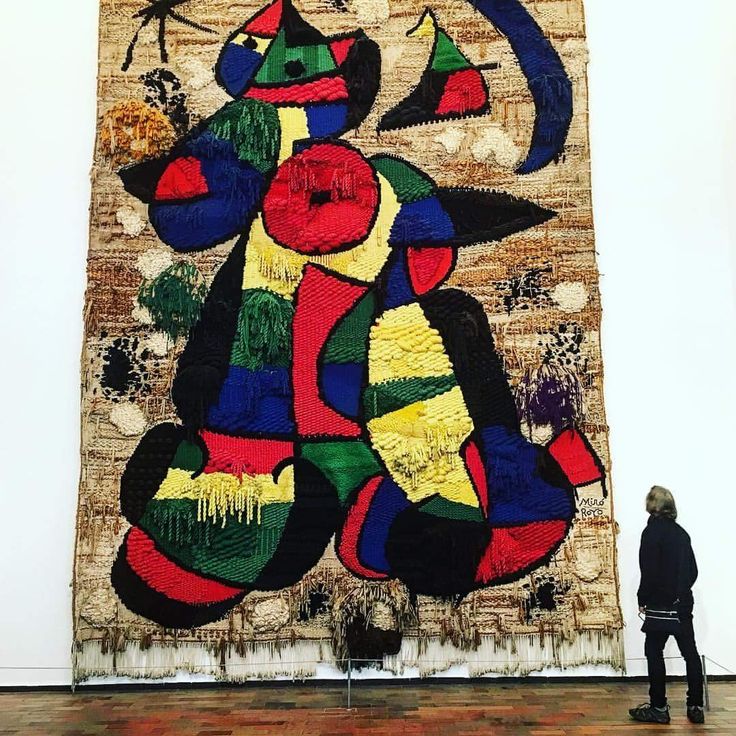
He said that the Miro Foundation is not a museum. The artist did not want it to be something cold, motionless, inanimate – after all, young artists had to go there to create and show their work.
Main halls Fundació Joan Miró
The Joan Miró Foundation is on the northern slope of Montjuïc, behind the National Palace. The building was designed intentionally for the museum by the artist’s friend, the architect Josep Lluis Sert. A system of arches between the halls and glass roofs provide the museum with natural light during the day.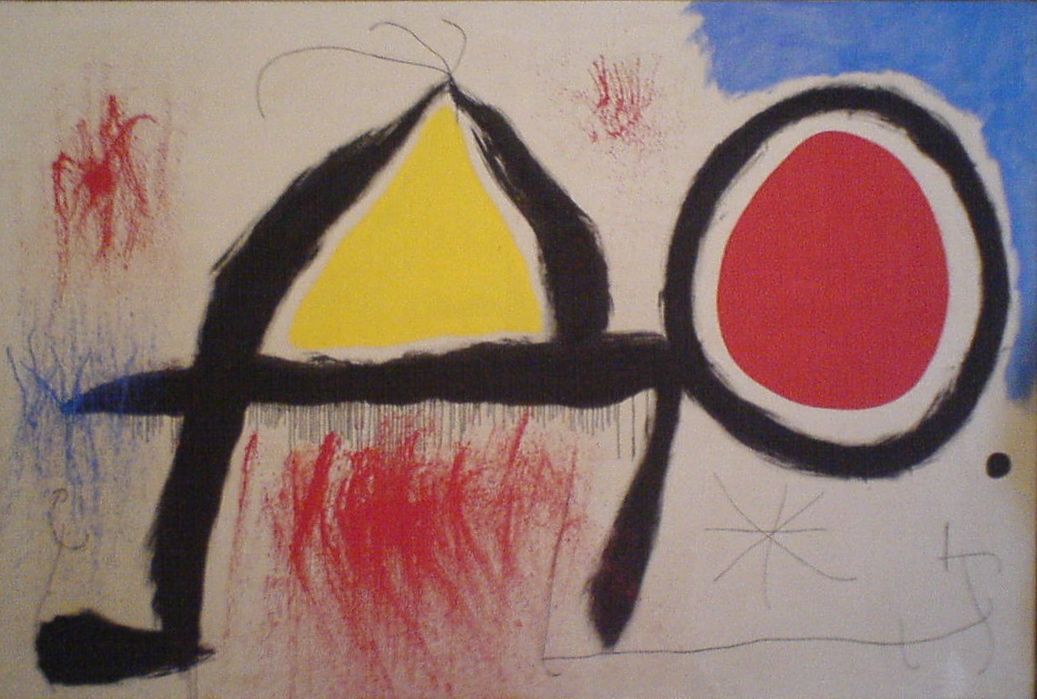
El patio
In the center of the Fundació Joan Miró there is a courtyard in typical Mediterranean style – el patio, around which various exhibition halls are concentrated:
- Hall of Tapestries
- Sculpture Hall
- Pilar Juncosa (hall named after Miro’s wife)
- Hall Joan Prats (which presents works by the artist of the 60s and 70s) and so to speak Hall K.
Espai 13 room
Espai 13 room of the Joan Miro Foundation on the 1st floor hosts exhibitions of young artists. Among the works exhibited in this collection are paintings, sculptures, photos of many famous artists of our time, for example:
- Pierre Alechinsky
- Balthus
- Anthony Caro
- Marcel Duchamp
A special place is occupied by the 2nd works of Alexander Calder “Four Wings” and “Fountain of Mercury” – a fountain in which there is liquid mercury, not water. Due to the poisonous properties of mercury, the fountain is covered with thick glass for the safety of visitors.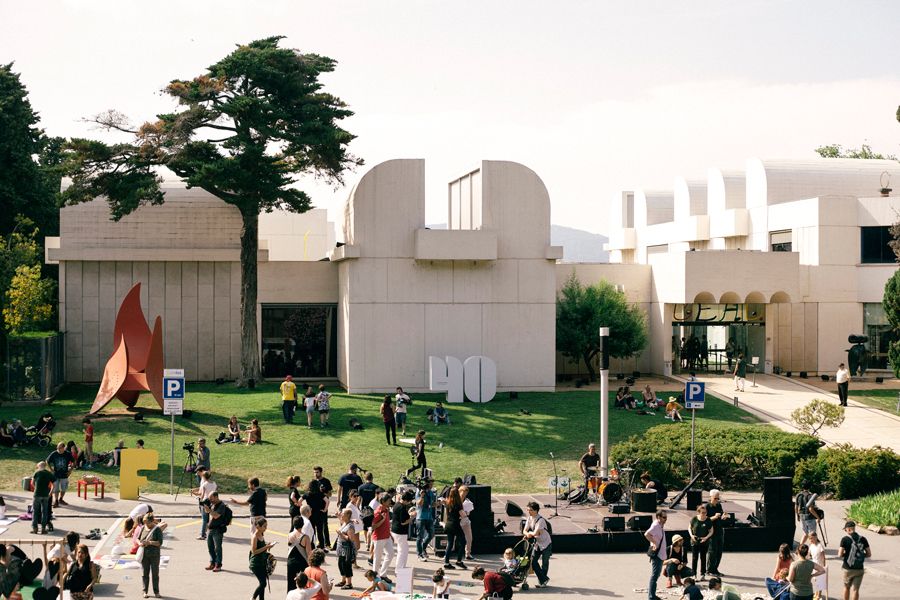
“Fountain of Mercury”
Terrace
From the terrace on the 2nd floor there is an amazing view of Barcelona.
A number of Miró’s works are also on display, such as La Caricia de un Pájaro (The caresses of the Birds), a painted bronze sculpture.
Collection of the Fondation
The main collection of the Joan Miró Foundation focuses on Miró’s signature style – basic colors and simplified organic shapes that symbolize stars, the moon, women, birds, are placed on half of the museum. Most of the works were donated to the museum by the author himself.
Other works by the Fundació Joan Miró show Miro as:
- cubist (“Pedralbes Street”, 1917)
- naive portrait painter (Portrait of a young girl, 1919)
- surrealist (“Man and woman in front of a pile of shit”, 1935)
On the 2nd floor there are creations of the final period of Miró’s work on various political topics.
In 1986 the museum building was enlarged, a lecture hall and a library appeared in it.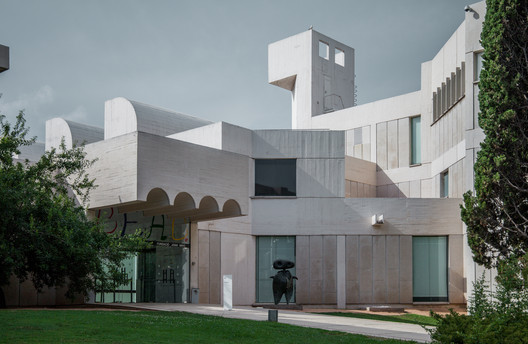
During his career, Miro showed interest in different colors, shapes and materials, which gave him the opportunity to experiment with various artistic genres:
- painting
- sculpture
- graphics
- ceramic
- theater
Works from the collection of the Museum of the Joan Miro Foundation – the main images in the artist’s work – a woman, a bird, the sky, stars. But, walking around the city, you can see other of his masterpieces in rather unexpected places. For example, on the sidewalk of the Rambla, near the Liceu Opera, you can see his mosaic Pla del Os, and in l’Escorxador Park there is one of the artist’s most famous sculptures, Mujer y pájaro (“Woman and Bird”).
The Joan Miro Foundation includes over 14,000 works by Joan Miro, including:
- paintings
- sculptures
- ceramic and textile works
- plus a complete collection of graphic drawings and sketches, everything from premiere works brought to life in Barcelona and Paris to the avant-garde
A number of sculptures by Joan Miró, such as Bon dia, Barcelona (Good afternoon, Barcelona), are exhibited in the courtyard of the Fondazione Joan Miro Museum.
Joan Miro: life and work
Joan Miro was born in Barcelona in 1893 and died on the island of Palma de Mallorca in 1983. His work can be divided into a number of periods. Until 1919, Miró was impressed by Cubism, he already met Picasso in Paris. The themes of his creations were landscapes, portraits, nudes. He later focused on surrealism. Miro was inspired by the works of Paul Klee, a German-Swiss artist and one of the most significant figures of the European avant-garde.
The most famous works of the artist’s surrealist creativity are paintings:
- Cultivated Land (1923)
- “Hunter” (1923)
- “Pastoral” (1923)
World recognition Joan Miró earned in 1928, when the Museum of Modern Art in New York exhibited 2 of his works. At that time, Miro doubted the meaning and relevance of painting, and seriously took up sculpture.
Works by Joan Miro
The most outstanding of his works were brought to life during the Spanish Civil War and combined the reflection of the whole nightmare of what is happening and the dreamy side of his character.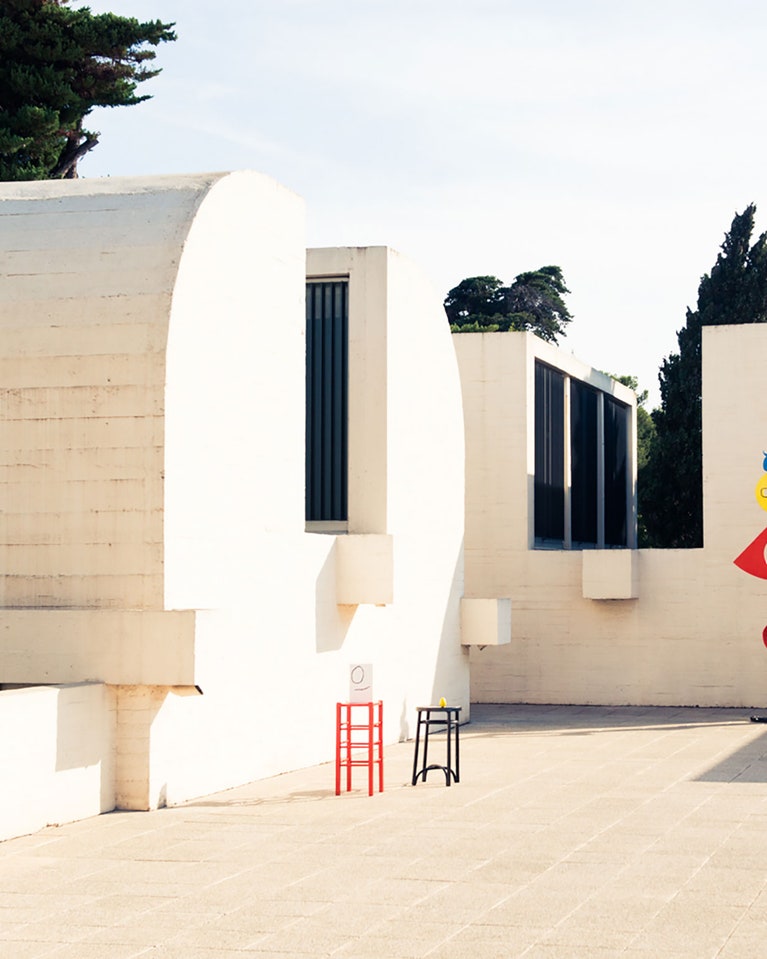
In later years Miro brought to life:
- a series of monumental ceramic panels that ennobled the dining room at Harvard University (1960-1961)
- building of the Higher School of Economic Sciences in St. Gallen (1964)
- fence of the Meg Foundation in Saint-Paul-de-Vence (1968)
- airport in Barcelona (1970)
In the Fondazione Joan Miro Museum, you can use QRpedia, which allows visitors to read publications about exhibits on Wikipedia pages, translated into various languages.
Commercially, Joan Miró is one of the best-selling contemporary artists. His abstract works are valued for their decorativeism, perfect for decorating bank halls and luxurious villas on the Cote d’Azur.
Useful information about the Fundació Joan Miró
Address : Parc de Montjuïc, Avinguda de Miramar
Metro station : Espanya
Opening hours Tuesday – Sunday from Tuesday to eight o’clock: Museum – 10:00 a.m. – Sunday until half past ten in the evening.
Entrance fee : adult – 13 euros, children under 14 years old – free of charge. You can buy tickets online to avoid queues at this link.
Joan Miro Foundation on the map of Barcelona
- How to avoid queues at Barcelona attractions. Tickets for the Sagrada Familia and Park Güell skip the line.
- How not to be deceived by local taxi drivers. Order a taxi in advance with fixed rates online. The most reliable service for ordering a taxi – KiwiTaxi .
-
Excursions in Barcelona with locals will help you to get to know this city for real.
The best way to get comfortable in an unfamiliar city is to walk around it with a person who has lived here for many years.
- We advise you to take out travel insurance so that there are no unpleasant surprises while traveling to Barcelona.
- Barcelona City Pass is a one-stop card that makes organizing your holiday in Barcelona easier and saves you a lot of time and money.
- Hotels in Barcelona: is our selection and recommendations.
- Bus Turistic is a tourist bus and a great way to get to all the necessary monuments of Barcelona quickly, with a breeze and comfort.
- Drimsim is a universal international SIM card and a free travel application. Best prices, fast internet and worldwide calls.
In the footsteps of Joan Miro in Spain
Pilar and Joan Miro Foundation in Mallorca
©
Turismo de Palma
miro
Journey into the world of art by Joan Miro
Let’s take a journey through places associated with the life and work of one of the most unique and significant artists of the 20th century: Joan Miro.
Go to my bookmarks
Barcelona
Show travel destination
Mont Roig del Camp
Display tourist destination
Joan Miro Foundation
Show travel destination
Madrid
Display travel destination
???navegacion.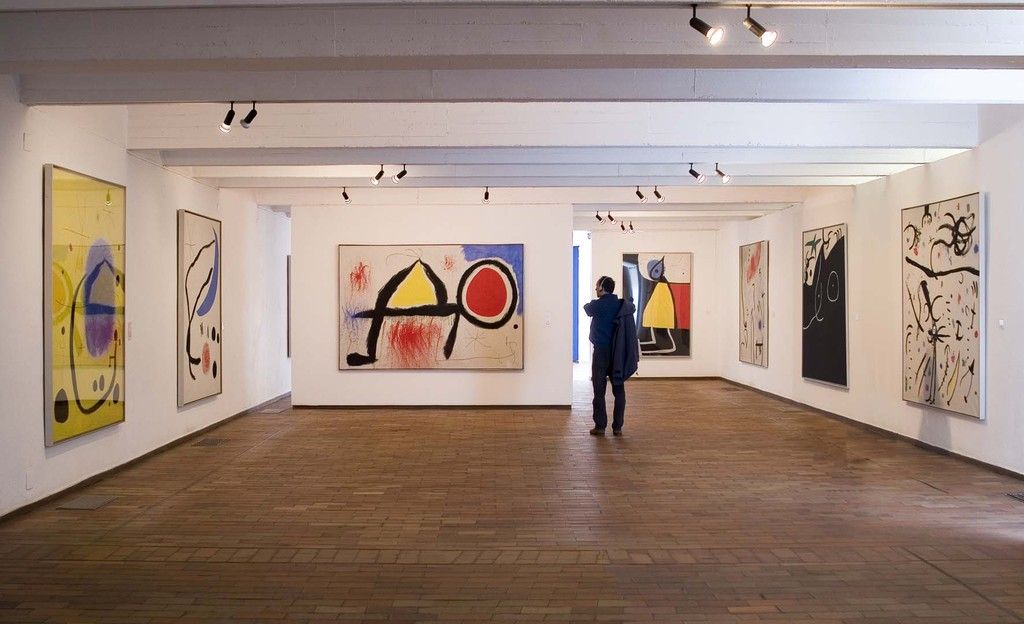
???navegacion.siguiente???
Stage 1: Barcelona, hometown of the artist
Joan Miro was born in Barcelona in 1893. The first individual exhibition of his works was also held here, and his only daughter was born here.
Today, this incredible city, which attracts a huge number of tourists, is filled with Miró’s creativity. It is noteworthy that the great artist and sculptor started out as an accountant, but as a result he created many incredible paintings and left a huge amount of sculptural works and drawings for future generations. We recommend that you spend at least Saturday and Sunday getting to know the most significant places related to the master’s work. And if you have more time, then that’s just fine.
Stage 2: Mont Roig del Camp, the artist’s retreat
This small village is located in the province of Tarragona, about 120 km from Barcelona.
Distance:125km
Road: Automobile
/ Duration: 1 hour 25 minutes
In 1911 Miro fell ill with typhus. And in order to improve his health, he moved to a rural estate, which his parents bought in Mont-roig. He probably really fell in love with these places and the local nature. Later, he stopped many times in Mont-roche, drawing inspiration from the surrounding landscapes. The master himself claimed: “All my works were conceived in Mont-roche.” Did you know that one of his most famous paintings, called “The Farm”, is dedicated to these places?
Stage 3: Palma de Mallorca, the last years of Miro’s life
Miró believed that “Mallorca is a truly beautiful country, and in some corners of it the freshness of the first days of the creation of the world is still preserved.” We will not object to the master.

Distance: 261km
Miró had close ties with Mallorca. The artist’s mother was from there, where he married Pilar Juncosa, who was also born on the island. And here he died. You will be delighted with this most beautiful island washed by the turquoise waters of the Mediterranean Sea. You have a great opportunity to go there by plane from Barcelona. The flight to the airport of the island capital, Palma de Mallorca, lasts only an hour.At 1956 Miró finally settled in Palma. There, according to his order, a house was built, as well as a workshop, which he had long dreamed of. The project was carried out by a friend of the artist, Josep Luis Sert. Today, the workshop belongs to the Pilar and Joan Miro Foundation, whose activities we recommend to familiarize yourself with. It is also worth doing this because the main building of the Foundation was built according to the Moneo project, and the museum itself has about 6,000 works by the master.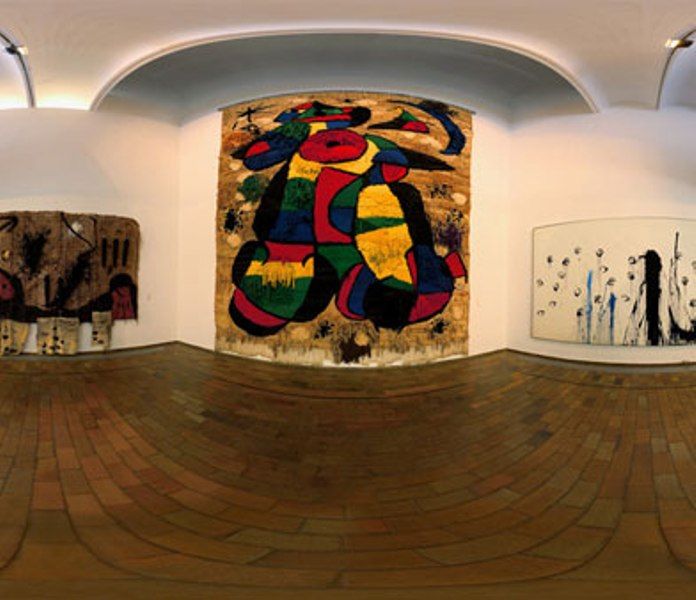
Stage 4: Madrid, an excellent addition
Miro’s glory knows no geographical boundaries. The works of the artist and sculptor are kept in prestigious museums around the world: in Chicago, Houston, Milan, Paris, New York, Washington… And, of course, they can also be viewed in Madrid.
Distance: 640km
The Spanish capital has excellent transport links. You will fly from Palma to Madrid in an hour and a half. Barcelona-Madrid flights operate daily. On working days, the interval between them is up to 20 minutes.

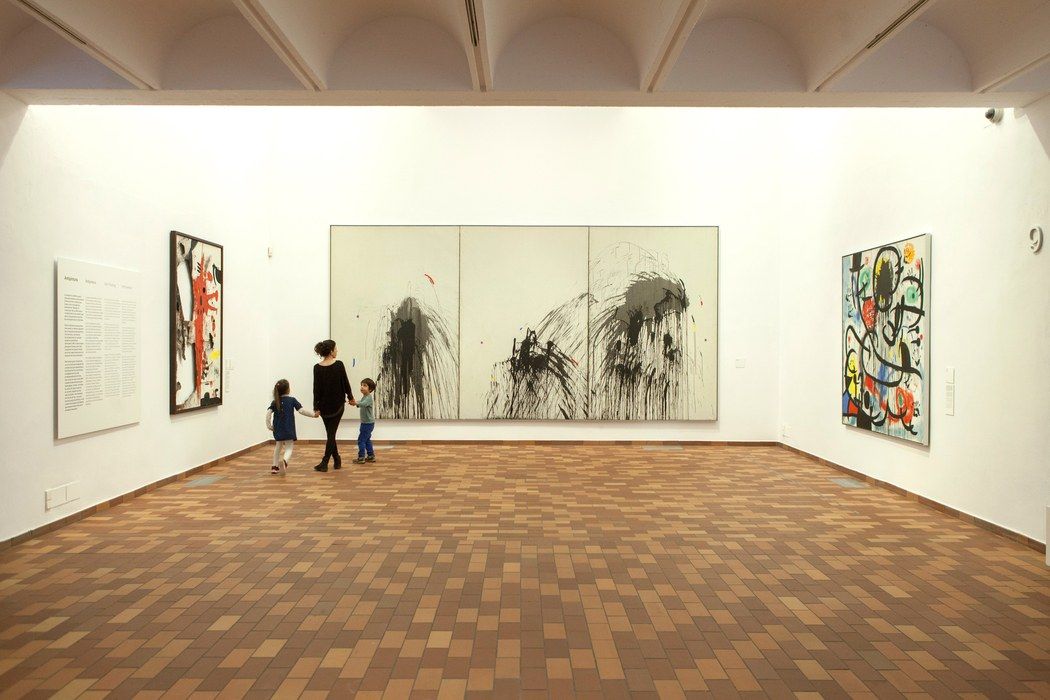 This extensive, diverse collection, representative of all the…
This extensive, diverse collection, representative of all the…
 The best way to get comfortable in an unfamiliar city is to walk around it with a person who has lived here for many years.
The best way to get comfortable in an unfamiliar city is to walk around it with a person who has lived here for many years.
